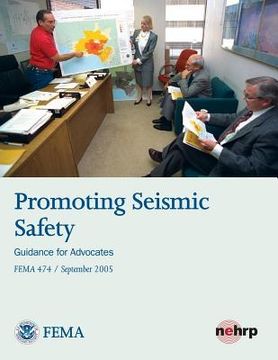Promoting Seismic Safety: Guidance for Advocates (FEMA 474 / September 2005) (in English)
Synopsis "Promoting Seismic Safety: Guidance for Advocates (FEMA 474 / September 2005) (in English)"
Earthquakes damage structures - buildings, roads and bridges, utility and communications systems - and those damaged structures kill and injure people and cost a great deal to fix. And while the structures are not functioning, the businesses that rely on them either fail or face great financial hardship. Seismic safety advocates attempt to reduce all earthquake losses in various ways. Structures can be strengthened to resist shaking, either when they are built or later in their lives, or they can be sited in areas less subject to violent shaking. But increasing seismic safety requires knowledge of the earthquake hazard in a community or area, an understanding of how to reduce structural damages, and a willingness to spend the money and time necessary to do so. Decisions to invest in seismic safety are made by individuals, private and public sector organizations, and governments, so the goal of seismic safety is served by risk education, community activism, and political activism. Promoting seismic safety can be challenging because people seem indifferent to its benefits or decision-makers dismiss good ideas about ways to make buildings and communities more resistant to the damaging effects of earthquakes. Advocates work hard and care deeply, yet often feel that their efforts are ignored. Given these frustrations, advocates sometimes give up, or wait for another day. This resource kit is meant to inspire all advocates to keep working toward their goal. The briefs assembled here distill what we have learned-through research and experience over the last 40 years-about promoting seismic safety in the United States. Advocates can be almost anyone: people whose jobs involve public safety; design professional who want to make a difference; those who work in organizations with missions to increase seismic safety; and citizen-activists who have a personal stake in earthquake safety. Many potential advocates do not think of themselves as such because they are not trying to change seismic safety policy. But seismic safety can be increased at levels as various as design and building professional practices, planning commission and special district procedures, and implementation of public safety programs. Across the U.S., advocates have improved seismic safety in areas with moderate to very high degrees of seismic risk by arguing for reduction of future losses in damaging earthquakes, and by calling attention to the economic and social vulnerability of their community to the losses an earthquake could inflict. Especially important to consider are buildings that are built to out-of-date and inferior codes, where people nonetheless live and work. Successful advocates point out another rationale for seismic safety - more earthquake resilience in highways, power and utility systems, buildings, and communities means increased resilience to other types of damaging events, both natural and human-caused. Talking about seismic issues often has the benefit of raising questions about the condition of facilities or the readiness to respond to any extreme event.

